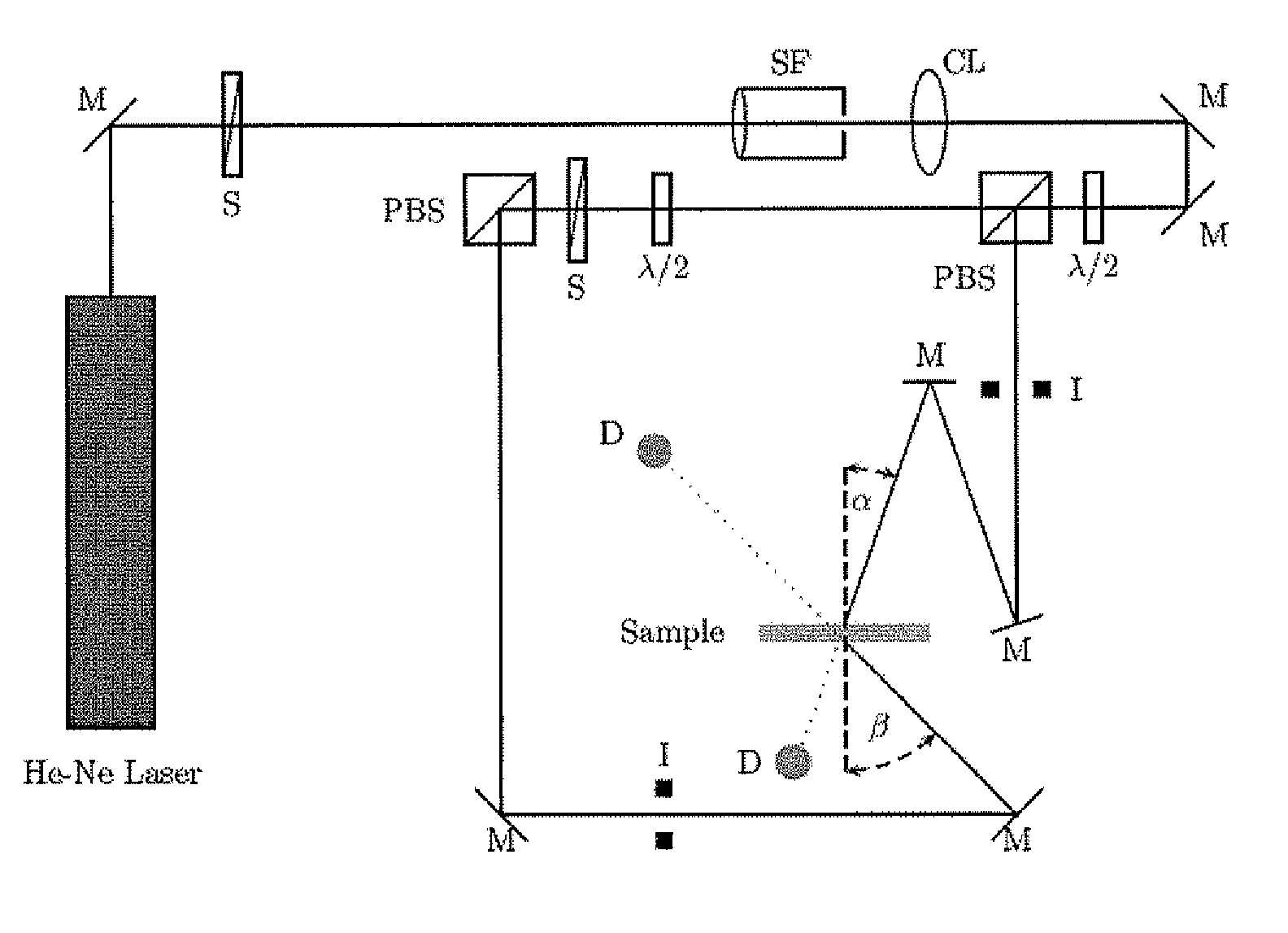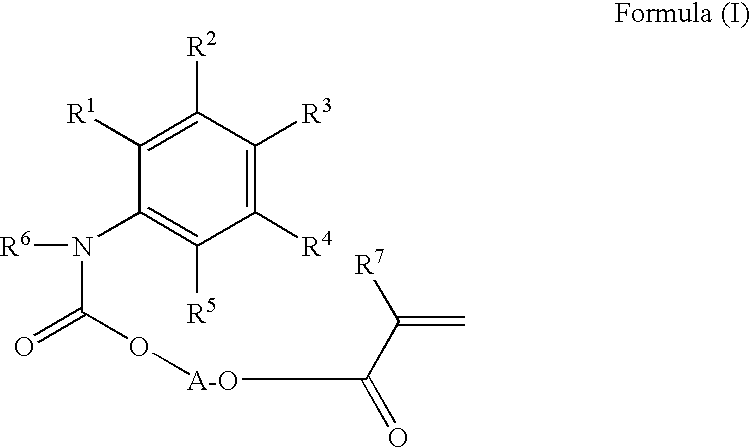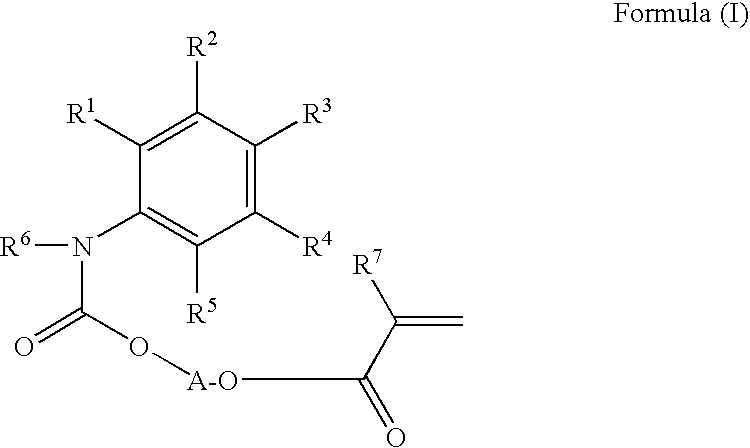Phenyl isocyanate-based urethane acrylates, processes for producing and methods of using the same
a technology of phenyl isocyanate and urethane, which is applied in the field of phenyl isocyanate-based urethane acrylates, processes for producing and methods of using the same, can solve the problems of relatively complicated and expensive processes, and achieve the effect of improving de values and high refractive index
- Summary
- Abstract
- Description
- Claims
- Application Information
AI Technical Summary
Benefits of technology
Problems solved by technology
Method used
Image
Examples
example 1
2-({[3-(Methylsulphanyl)phenyl]carbamoyl}oxy)ethyl prop-2-enoate
[0042]0.02 g of 2,6-di-tert-butyl-4-methylphenol, 0.01 g of Desmorapid Z, 11.7 g of 3-(methylthio)phenyl isocyanate were initially introduced into a 100 ml round-bottomed flask and heated to 60° C. Thereafter, 8.2 g of 2-hydroxyethyl acrylate were added dropwise and the mixture was kept farther at 60° C. until the isocyanate content had fallen below 0.1%. Cooling was then effected. The product was obtained as a light yellow liquid.
example 2
2-({[3-(Methylsulphanyl)phenyl]carbamoyl}oxy)propyl prop-2-enoate
[0043]0.05 g of 2,6-di-tert-butyl-4-methylphenol, 0.02 g of Desmorapid Z, 26.8 g of 3-(methylthio)phenyl isocyanate in 50 g of ethyl acetate were initially introduced into a 250 ml round-bottomed flask and heated to 60° C. Thereafter 21.1 g of 2-hydroxypropyl acrylate were added dropwise and the mixture was kept further at 60° C. until the isocyanate content had fallen below 0.1%. Thereafter, the ethyl acetate was distilled off at 5 mbar and cooling was effected. The product was obtained as a light yellow liquid.
example 3
2-({[3-(Methylsulphanyl)phenyl]carbamoyl}oxy)butyl prop-2-enoate
[0044]0.05 g of 2,6-di-tert-butyl-4-methylphenol, 0.02 g of Desmorapid Z, 26.7 g of 3-(methylthio)phenyl isocyanate were initially introduced into a 250 ml round-bottomed flask and heated to 60° C. Thereafter, 23.3 g of 2-hydroxybutyl acrylate were added dropwise and the mixture was kept further at 60° C. until the isocyanate content had fallen below 0.1%. Thereafter, the ethyl acetate was distilled offat 5 mbar and cooling was effected. The product was obtained as a crystalline solid.
PUM
| Property | Measurement | Unit |
|---|---|---|
| refractive indices | aaaaa | aaaaa |
| refractive indices | aaaaa | aaaaa |
| refractive index | aaaaa | aaaaa |
Abstract
Description
Claims
Application Information
 Login to View More
Login to View More - R&D
- Intellectual Property
- Life Sciences
- Materials
- Tech Scout
- Unparalleled Data Quality
- Higher Quality Content
- 60% Fewer Hallucinations
Browse by: Latest US Patents, China's latest patents, Technical Efficacy Thesaurus, Application Domain, Technology Topic, Popular Technical Reports.
© 2025 PatSnap. All rights reserved.Legal|Privacy policy|Modern Slavery Act Transparency Statement|Sitemap|About US| Contact US: help@patsnap.com



